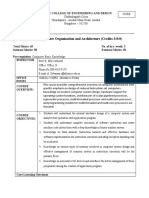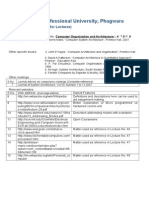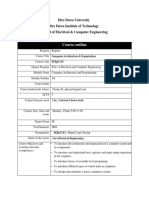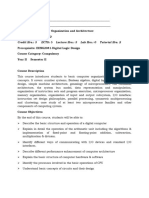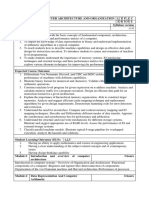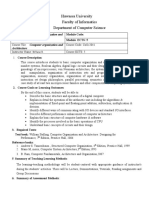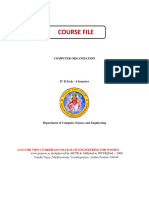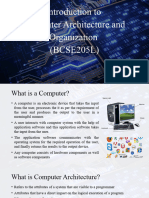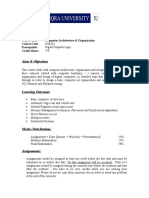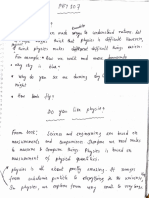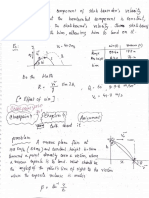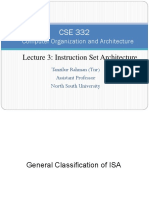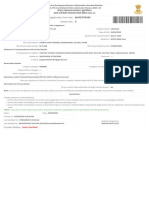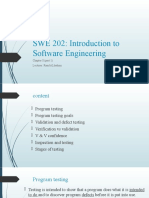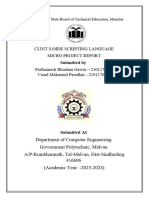0% found this document useful (0 votes)
152 views21 pagesIntro Computer
This document provides information about the CSE 332 - Computer Organization and Architecture course taught by Tanzilur Rahman at North South University. The key details include:
1. Lecture times are Monday and Wednesday from 9:40-11:10 and 11:20-12:50 in the lecture room. Labs are held in the Digital Microprocessor Laboratory.
2. The course introduces basic computer organization concepts and teaches students to design computer processors using hardware description languages and assembly language.
3. Evaluation includes digital laboratory work, assignments, projects, exams, quizzes, and class performance based on participation and notebooks.
Uploaded by
Imran KhanCopyright
© © All Rights Reserved
We take content rights seriously. If you suspect this is your content, claim it here.
Available Formats
Download as PPTX, PDF, TXT or read online on Scribd
0% found this document useful (0 votes)
152 views21 pagesIntro Computer
This document provides information about the CSE 332 - Computer Organization and Architecture course taught by Tanzilur Rahman at North South University. The key details include:
1. Lecture times are Monday and Wednesday from 9:40-11:10 and 11:20-12:50 in the lecture room. Labs are held in the Digital Microprocessor Laboratory.
2. The course introduces basic computer organization concepts and teaches students to design computer processors using hardware description languages and assembly language.
3. Evaluation includes digital laboratory work, assignments, projects, exams, quizzes, and class performance based on participation and notebooks.
Uploaded by
Imran KhanCopyright
© © All Rights Reserved
We take content rights seriously. If you suspect this is your content, claim it here.
Available Formats
Download as PPTX, PDF, TXT or read online on Scribd
/ 21



